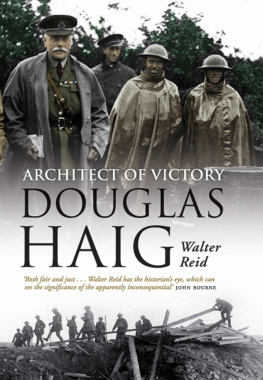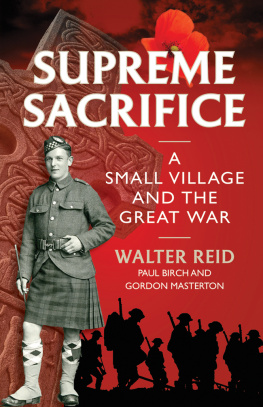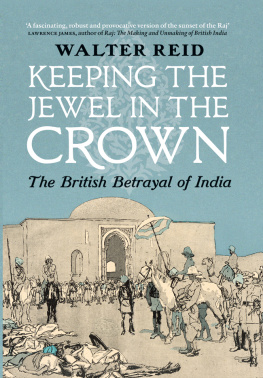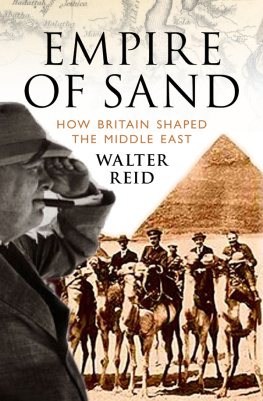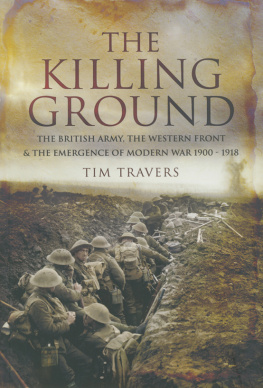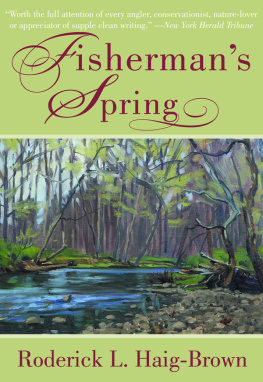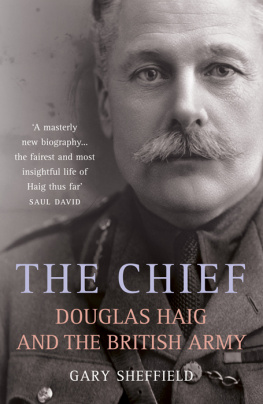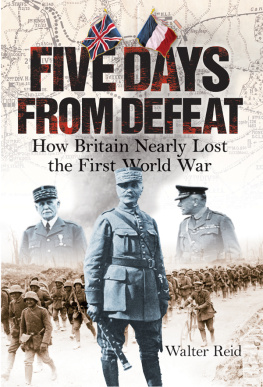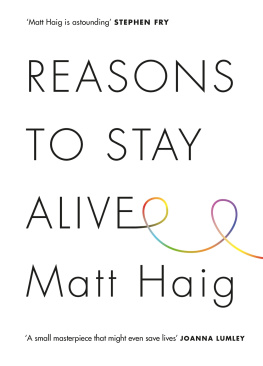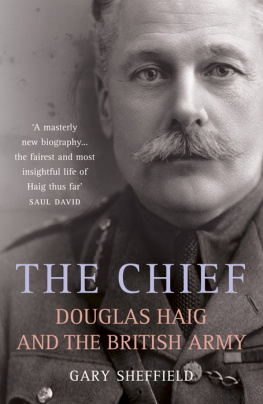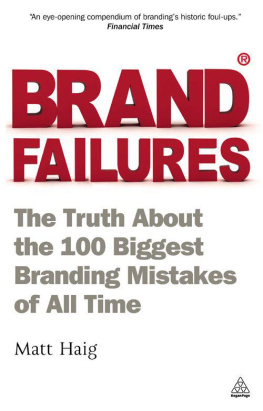Walter Reid was educated at Oxford University, where he read history, and Edinburgh University. He is now based in the west of Scotland, but spends part of the year in France. His previous work includes To Arras, 1917 (Tuckwell Press), and Churchill 19401945: Under Friendly Fire, also published by Birlinn.
Architect of Victory
Douglas Haig
WALTER REID

In memory of
Ronald and Elsie Reid
and for
Janet, Julia and Bryony
This eBook edition published in 2011 by
Birlinn Limited
West Newington House
Newington Road
Edinburgh
EH9 1QS
www.birlinn.co.uk
First published in Great Britain in 2006
This edition published in 2009 by Birlinn Ltd
Copyright Walter Reid 2006, 2009
The moral right of Walter Reid to be identified as the author of this work has been asserted by him in accordance with the Copyright, Designs and Patents Act 1988
All rights reserved. No part of this publication may be reproduced, stored or transmitted in any form without the express written permission of the publisher.
eBook ISBN: 978 0 85790 124 8
British Library Cataloguing-in-Publication Data
A catalogue record for this book is available from the British Library
ACKNOWLEDGEMENTS
The pleasure of writing this book has been greatly enhanced by the friendships formed with so many people who were prepared to share their time and knowledge with me.
My thanks are first of all due to the second Earl Haig. Despite experiences that might have disposed him otherwise, he remains ready to assist those who write about his father, and he made himself available for lengthy and productive interviews. He also read an early draft and responded with detailed observations. He and his family cannot fail to have been hurt by much that has been written in the past about his father, and it is all the more commendable that he remains accessible to researchers. I am most grateful to him.
The Field-Marshals grandson, Douglas Scott, was most kind and hospitable, also reading and commenting on a draft typescript, and sharing with me insights from his grandfathers pre-war papers, which he is currently editing for publication.
In succession to the late John Terraine, John Hussey has done much to rehabilitate Haigs reputation, publishing a series of articles of precise scholarship whose scintillations illuminate aspects of his career. I must record my very great gratitude to him for devoting so much time to my typescript, supplying very extensive comments and directing me towards fruitful lines of further research.
Dr John Bourne not only allowed me to disturb him at the Centre of First World War Studies (of which he is the Director) at Birmingham University, but also read and most helpfully and copiously annotated a late draft. I am very grateful for his time and trouble.
Major Gordon Corrigan commented extensively on a draft, at more or less the same time as his own television series Great British Commanders was broadcast. The inclusion of Haig in a short list of such men shows how far his standing has been reassessed.
As well as reading through the typescript, correcting points of fact and testing questions of judgement, Michael Orr kindly arranged some important copyright clearances.
I am delighted to have the opportunity of expressing my thanks to Dorothe Bigand of Montreuil-sur-Mer, Sir Martin Gilbert, Colonel Clive Fairweather, Dr Matt Houlbrook, Jean-Marie Monnet, Dr Gary Sheffield, Lieutenant-Colonel DickTaylor, Frances Walsh and Derek Winterbottom.
I received expert and friendly assistance from the staffs of the National Library of Scotland (especially Colm McLaughlin, who knows the Haig papers as no one else does), the Liddell Hart Centre for Military Archives (particularly Kate OBrien), Glasgow University Library, the Mitchell Library, Glasgow, and the Signet Library, Edinburgh.
Permission to quote from copyright materials was kindly given by the Earl Haig, copyright holder in respect of his fathers papers, and the Trustees of the National Library of Scotland, the custodians of the papers, by the Trustees of the Liddell Hart Centre for Military Archives in respect of the Charteris, Edmonds, Gough, Kiggell and Robertson papers, by the Kiggell and Robertson families, and by Dr John Bourne, Professor Richard Holmes, Dr Correlli Barnett, Dr Gary Sheffield and the families of the late Ruth du Pree and John Terraine.
Doris Nisbet uncomplainingly faced up to my illegible manuscript, confused typescript and muttered dictation, as she has done for nearly thirty years (Haig was fortunate to have his Doris, and I have been fortunate to have mine), and produced something fit for my publishers, where Dr John Tuckwell was a model of patience and a source of good advice. Dr Lawrence Osborn detected and corrected innumerable instances of textual sloppiness, however well hidden, and Andrew Simmons moved the book through the production process with great skill and good humour.
Dr Daniel Scroop read a draft and made many helpful suggestions. He and David Hamill also provided me with unobtrusive and most welcome support, which meant much to me and for which I am grateful.
My daughters, Dr Julia Reid and Bryony Reid, read through the typescript, eliminated innumerable solecisms and suggested important editorial changes and clarifications. My wife, Janet, worked through many successive versions of the draft, and any discernible improvement is attributable to her judgement and diligence. She was also very tolerant of the invisible addititional member of our household. I dedicated a previous book to my family and had originally intended that this one would simply be inscribed to the memory of my parents. But such has been the love and very special support that I have received from Janet, Julia and Bryony that I should prefer to duplicate rather than omit a public acknowledgement: the book is therefore for them as well.
ABBREVIATIONS
ADC | Aide-de-camp |
BEF | British Expeditionary Force |
CIC | Commander-in-Chief |
CinC |
CID | Committee of Imperial Defence |
CGS | Chief of the General Staff |
CIGS | Chief of the Imperial General Staff |
CVO | Commander of the Victorian Order |
DSD | Director of Staff Duties |
GCB | Grand Cross of the Bath |
GHQ | General Headquarters |
GOC | General Officer Commanding |
GSO | General Staff Officer |
IG | Inspector General (of Cavalry) |
KCVO | Knight Commander of the Victorian Order |
MS | Military Secretary (in India) |
QMG | Quartermaster General |
MILITARY FORMATIONS
The smallest unit in the army, and the one that represented the ordinary soldiers immediate family, was the platoon, consisting of about fifty men. Platoons were grouped together in companies, and companies into battalions: sixteen platoons came to be the normal strength of a battalion. A regiment was composed of a number of battalions, the number varying throughout the course of the war, and if the platoon was the soldiers immediate family, the regiment was his extended family and the unit to which he owed his loyalty and which felt responsible for his well-being.
Next page
